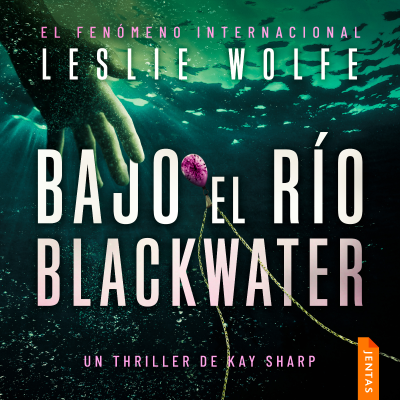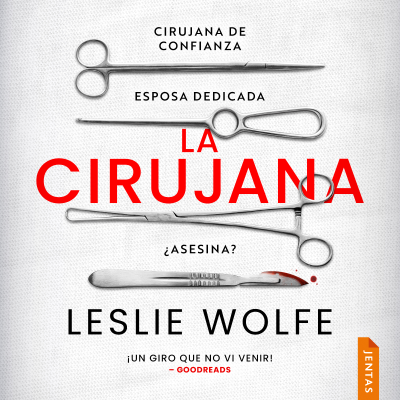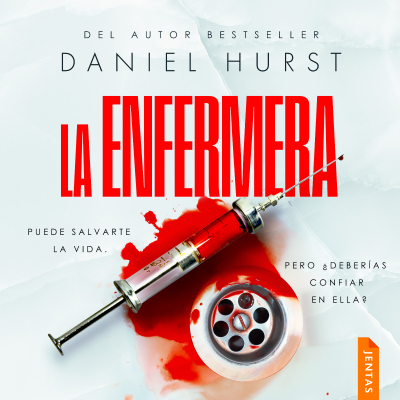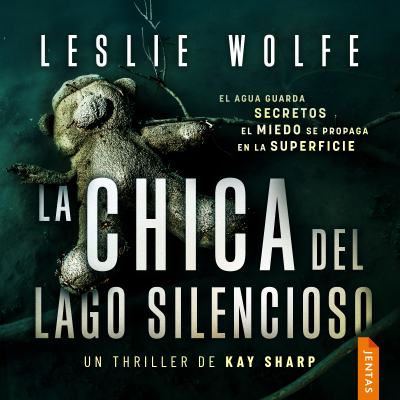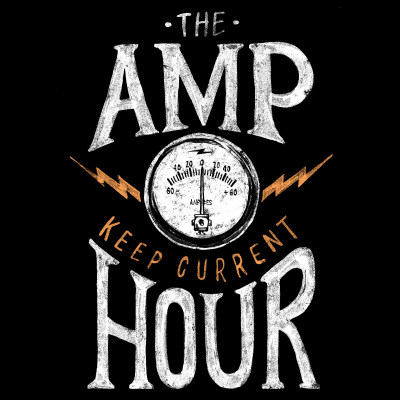
The Amp Hour Electronics Podcast
inglés
Tecnología y ciencia
Disfruta 30 días gratis
4,99 € / mes después de la prueba.Cancela cuando quieras.
- 20 horas de audiolibros / mes
- Podcasts solo en Podimo
- Podcast gratuitos
Acerca de The Amp Hour Electronics Podcast
A weekly podcast about the electronics industry. Occasional guests. Lots of laughs.
Todos los episodios
311 episodios#710 – Tugging on the Nerd Heartstring
[https://theamphour.com/wp-content/uploads/2025/12/710.jpg] * Chris got back from his honeymoon to the Galapagos, see photos on the updated version of his blog. [https://chrisgammell.com/] * Dave encountered a super secret podcast location * Before leaving on vacation, Chris went to an event mentioned in episode 708 launching a new Tektronix scope. * The parent company has been Danaher -> Fortive -> Ralliant (now based out of Raleigh) * Large budget events * Don Mcmillan is technically funny [https://technicallyfunny.com/] * Open Circuit * The Way Things Work [https://amzn.to/4pov3oQ] * Discman teardown [https://www.youtube.com/watch?v=hw0enSx3ScA] * Neo the home robot [https://www.linkedin.com/posts/neo-the-home-robot-order-today-ugcPost-7388999307510587392-x6tE?utm_source=share&utm_medium=member_desktop&rcm=ACoAAACtQ0gB7jBJ616FzfkeLdsb1j88UXa6MhM] * Humane AI pin ‘tugging on the nerd heartstring’ * Nikola / Trevor Norton * Auto concept cars * Rigol MHO 900 videos, already hacked, paid hack [https://www.youtube.com/watch?v=6lBU4NwmY7s] * EEVblog forum * Unknown chinese fpga * Stephen Hawes working on a PCB that can be laser cut for super quick turn boards [https://www.youtube.com/watch?v=A_IUIyyqw0M] * Oxide and Friends podcast [https://oxide-and-friends.transistor.fm/] * KiCon (US) 2025 Talks [https://www.youtube.com/playlist?list=PL-reVyOy0P87rP9MQ3r2oe3wGkgO-Zfcr]
#709 – Nobel Prize Winner Dr Barry Marshall
[https://theamphour.com/wp-content/uploads/2025/11/DrBarryMarshall-Small-50-300x199.jpg]Dr Barry Marshall won the 2005 Nobel Prize in Physiology or Medicine for discovery of the bacterium Helicobacter pylori and its role in gastritis and peptic ulcer disease. But Barry is also an electronics hobbyist and vintage HP and Tek oscilloscope and vintage computer enthusiast. He visited the EEVBlog lab and sat down with Dave for an impromptu discussion about all sorts of things. https://www.nobelprize.org/prizes/medicine/2005/marshall/facts/ [https://www.nobelprize.org/prizes/medicine/2005/marshall/facts/]
#708 – All the Connectors with Davide Andrea
[https://theamphour.com/wp-content/uploads/2025/11/708.png] Welcome Davide Andrea [https://www.linkedin.com/in/davideandrea], author or The Electronic Connector Book [https://connectorbook.com/]! And many thanks to Blues [https://Blues.com] for sponsoring this episode of The Amp Hour! Get 10% off your next order in their online store [https://store.blues.com] for a development kit by using the code AMPHOUR. * Davide is an engineer working on Battery Management Systems at Elithion [https://elithion.com/index.php] * He got into writing and editing books via a postcard sent to him after he gave a talk * For many years he was an editor at Artech house [https://us.artechhouse.com/] * He works on Lithium BMS systems for large setups * How do young engineers learn about connectors, but for tribal knowledge within larger companies? * Digikey catalog is a good search for connectors overall * Industrial cinch by Harting [https://www.harting.com/en-US] * Should you design a custom connector (“no”) * Davide also built and maintains an online tool for finding connectors called Identiconn [https://connectorbook.com/identification.html?Q=] * Fretting is when vibration causes a connector to fail * Davide had to go to Bell Labs docs to look up some specs * Chris remarked that Identiconn [https://connectorbook.com/identification.html?Q=] is a McMaster (Carr) style browsing experience * Vendors divide based on how the fields are set up, because that is actually logical for them selling parts. It’s harder for finding/discovering components though. * On distributor sites, the connectors are grouped by how they were bought * Chris asked Davide about things that have gone wrong in his career with connectors * FFC doesn’t connect back into the socket after the tab is ripped away * ribbon cable vs ffc, CIC vs FPC * IDC – insulation displacement connector [https://en.wikipedia.org/wiki/IDC_(electrical_connector)] * Davide has filled in with generated terms where there are no defined language for a family/type of connector, such as with “bump idc” connectors * “dual beam? * Chris and Davide did a joint search for the high density CM4 connector [https://www.jeffgeerling.com/sites/default/files/images/board-to-board-connector-compute-module-4.jpeg] that mounts the Raspberry Pi module to another board * Gender of connectors (note: there is a great discussion about the historical nature of using gender for connectors in the book) * Pin vs plastic gender * Shrouded vs enshrouded * gaziatea (sic) – poem from the 1800 * USB type A connector * Self mating * APC7 – self mting connector * Anderson connectors * TNC BNC search [https://connectorbook.com/identification.html?N=&n=tnc_type_conn&c=TNC] * PFFE for the dielectric on a BNC/TNC * Magnetic connectors with pogo pins [https://connectorbook.com/identification.html?N=&n=pogo_pins] * Example connector from Hyte [https://www.hyte.pro/product/m413.html] * Crimps were designed in the 50s * The source of having so many power connectors is … imperialism? tahiti / fiji / nz all have different connectors * Why antennas are male/female is…money? And regulatory silliness via the FCC * Davide has also written about and is working on lithium ion batteries * A sodium ion battery book (self published, unlike the LiIon books) should be out next year * The Connector Book [https://connectorbook.com/] is self published. Your purchase directly supports Davide’s work…and you get the web tools for free! * “peak lithium” * What is required when refining sodium for batteries? * The voltage range and charging needs are different for Sodium Ion. For instance, the range goes from 4V to 2V * Find Davide on his various websites [https://connectorbook.com/], on LinkedIn [https://www.linkedin.com/in/davideandrea], on StackExchange [https://electronics.stackexchange.com/users/49808/davide-andrea], and on reddit [https://old.reddit.com/r/connectors/]
#707 – Welding with an HDMI Cable
[https://theamphour.com/wp-content/uploads/2025/10/707.png] Thanks to our sponsor Blues [https://blues.com/] this week! Visit the Blues store and use the code AMPHOUR [https://shop.blues.com/collections/blues-starter-kits] to get 10% off your first order of a kit. * Capacitors go pop on Dave’s audio setup [https://www.youtube.com/watch?v=xVp7yund84w], the Presonus monitors * Ground loops causing HDMI cable sparking [https://www.eevblog.com/forum/beginners/massive-sparks-from-hdmi-cable/] * Chris was watching Jetman videos [https://www.youtube.com/watch?v=HZRp6iRjnhQ] and got an ‘Is that real?’ from the kid. We find ourselves asking the same with all the AI generated video these days. * Fight between mehdi/electroboom and walter lewin [http://youtube.com/watch?v=0TTEFF0D8SA&vl=en] about KVL * Arduino bought by Qualcomm [https://www.qualcomm.com/news/releases/2025/10/qualcomm-to-acquire-arduino-accelerating-developers--access-to-i]! They also released the Arduino Uno Q [https://hackaday.com/2025/10/07/qualcomm-introduces-the-arduino-uno-q-linux-capable-sbc/], a single board computer running Debian that also has a beefy microcontroller running Zephyr * Daves post on X about the purchase [https://x.com/eevblog/status/1975773312719724971] * Arduino switched to Zephyr [https://www.cnx-software.com/2024/07/25/arduino-to-switch-from-arm-mbed-to-zephyr-rtos/] * A new enabler of this complex mix of embedded, linux, AI, and ML is a software offering from Arduino called App lab [https://docs.arduino.cc/software/app-lab/] * Spacey * Hardware meetup – ACES [https://luma.com/agjvrbjv] * Veritasium is PE owned now [https://www.youtube.com/watch?v=hJ-rRXWhElI] * Chris will be going to a Tektronix event for new gear and past guest Alan Wolke (W2AEW) [https://theamphour.com/theamphour-117-undulating-utensil-utility/] is giving a class * Chris has been rebooting his website [http://chrisgammell.com] to follow the ideas of the Small Web [https://benhoyt.com/writings/the-small-web-is-beautiful/] * Follow #electronicscreators on YouTube [https://www.youtube.com/hashtag/electronicscreators] to not be subject to algorithmic steering * Chris has been getting into gridfinity [https://www.youtube.com/watch?v=ra_9zU-mnl8] after discussing it a few shows ago. * Altium changed their pricing again…but it might be lower [https://www.altium.com/company/newsroom/announcement]? Hard to tell * Check out the features coming to KiCad in v10 [https://forum.kicad.info/t/post-v9-new-features-and-development-news/58848/41] * YOLO = “You Only Look Once”, Chris learned about it from OpenMV [https://forums.openmv.io/t/yolo-support/2181]
#706 – Leading Edge Analog with Joren Vaes
[https://theamphour.com/wp-content/uploads/2025/10/706-JorenVaes.png] Welcome Joren Vaes [https://www.linkedin.com/in/joren-vaes-mmwave/], design engineer at SOFICS [https://sofics.com/] * Simulation is critical when designing analog devices based on a PDK from the fab * Parasitics are significant, especially with new nodes having upwards of 16 metal layers * Chris complained about a class where the professor made them draw planar structures with graph paper with colored pencils * Large fabs on leading edge nodes have 1800 page textbook of rules * Because the constraints get tighter, that book gets longer for each node * 2 nm mass production on finfet currently with TSMC * 22 was the last classic cmos * Finfet [https://en.wikipedia.org/wiki/Fin_field-effect_transistor], looks like a devil * ‘gate all around’ / nanosheet * CFET [https://www.imec-int.com/en/articles/imec-puts-complementary-fet-cfet-logic-technology-roadmap] (complementary field effect transistor) is next * Joren really gets Maxwells Equations…as you have to at super high speeds * SOFICS are making phy’s / IP blocks * Amplifiers that are DC to 50 GHz * Making a datasheet for the resulting IP block * Joren got his PhD working on millimeter wave applications * It’s all just physics * Using coils to impedance match between layers * Reflecting off of different materials at angles is Snells law (not lorentz equation) and that extends to different materials at different wavelengths * Cables are very lossy at 100 GHz…dBs per cm * Parasitics [https://sofics.com/features/low-parasitic-capacitance/] impact every part of the design process * Wireline community – name for the high speed interfaces, including research in the space * Most transistor threshhold voltages that Joren works with are … 750 mV! * Voltage dependent drc rules * Electromigration [https://en.wikipedia.org/wiki/Electromigration] – holes in wires from electrons * ESD is a big part of the business, and a large source of parasitics * New product development for IP blocks * Working with customers and Foundry at the 2 nm node [https://en.wikipedia.org/wiki/2_nm_process] * Design companies need to be paying 100s of thousands to software providers * After, it goes to spice and schedmatic * Joren decides whether to jump in on layout * LVS – layout vs schematic [https://en.wikipedia.org/wiki/Layout_versus_schematic] * Parasitic extraction (spice netlist) * PDKs define how you can do the layout stage * Lower cost tools exist but more expensive tools have tooling that tells you when you’re violating DRC * 3 main vendors * Cadence * Synopsis * Siemens (Calibre) * Foundries soemtimes only support one tool * Doing test wafers allows testing of structures. They often get MPW at a discount from the fab (since they’re often testing new processes as well) * How do they test with packaging options? * ‘low speed’ can be die bonded or pcb mounted * high speed does on wafer probing (with veeeery expensive probes) * Check out Sofics.com [https://Sofics.com] for more info on the company. They also have a blog with a great name. [https://monthly-pulse.com/] * Follow or connect with Joren on LinkedIn [https://www.linkedin.com/in/joren-vaes-mmwave/]
Elige tu suscripción
Premium
20 horas de audiolibros
Podcasts solo en Podimo
Podcast gratuitos
Cancela cuando quieras
Disfruta 30 días gratis
Después 4,99 € / month
Premium Plus
100 horas de audiolibros
Podcasts solo en Podimo
Podcast gratuitos
Cancela cuando quieras
Disfruta 30 días gratis
Después 9,99 € / month
Disfruta 30 días gratis. 4,99 € / mes después de la prueba. Cancela cuando quieras.











